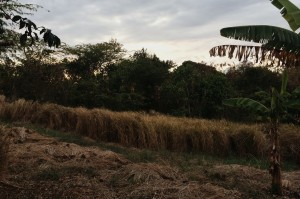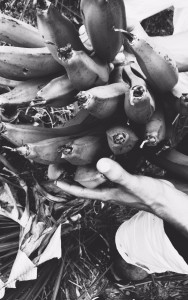I’ve been in New York for 24 hours now, finally home after five weeks of travel—first to Vieques, Puerto Rico for the month of June and then home to Columbus, Ohio, for Fourth of July with my family. Reflecting on my time in Vieques, Ohio, and now in New York, I’m struck by the distinct identities of these places and the ways in which their inhabitants connect to and forge an imaginary of each space. The New Yorkers I know tend to offer their own distinctive ideas about the city’s character and what it means to be here. They frame their characterizations in terms of stories about their experiences in New York. The same is true of most places, I guess, but the structure of the stories varies. In Ohio, where everything is a freeway drive away, stories tend to stay put. They don’t bounce from neighborhood to neighborhood as New York stories tend to do. Vieques, for me, presents a hybrid of these two structures. Like Manhattan, Vieques is a small island, and like Columbus, it has a driving culture. The steep hills that dot the island make it difficult to get around Vieques without a car, so nearly everyone who lives there has one, or otherwise a horse. Driving (or riding) is tricky and inconvenient on the narrow, winding roads, and every last car sputters and creaks with the rust that’s inevitable in humid environments. The people on the island live so geographically close to one another and are at the same time distanced from one another by inconvenience. Now that I’ve left Vieques, I get the sense that the transit situation there effects more than the flow of daily life. The distance between individual homes has an effect of Viequenses’ imagining of their island, makes it awkward and disjointed. I only started to feel this awkwardness in the last week of my stay, but now I’m nearly convinced that the inconvenience of transit inhibits the crafting of stories as much as it does the crafting of a community, imagined or otherwise.




HI! I found your post to be really intriguing. I actually read it a few times and turned around the ideas about a neighborhood, city or town is created or imagined based on how the transit is set up. It is true, in New York, the density of how we live creates a relatively efficient space, which in turn creates a space which allows for crossing paths in a variety of directions.
Your comparison to how Vieques is set up is interesting. I was intrigued by how you found that the actual space between each home was so vast and disjointed and difficult to travel between that it created a less communal atmosphere. However, I still wonder whether it is transportation itself that inhibits this concept of crafting of stories that you described above. Perhaps they craft a different type of story that what we are used to. Perhaps these stories are less vocal. I say this because you eluded to the concept of an imagined community. A space cannot be created unless someone has imagined it; whether it is New York, Columbus, or Vieques. Benedict Anderson discusses how in a community most members will not meet or hear of one another, however we all imagine a space that is congruent and thus functions and that is how we create our nations and cities. Since every community is imagined in this sense, I ask if you could explain about how the members of the community interact. Do you feel that there is a gap between the various members of the community in Vieques that do not know each other and this consequently results in a community that is less efficient than it could be?
If we continue with understanding nations and communities as being built under Anderson’s concept of “imagined communities”, do you think that certain areas of the world have not been imagined properly perhaps – maybe due to a varying conceptions of a space?
I thought that your ideas about stories, space and transportation were very thought provoking. As a city is built we constantly think about how time and space cross each others paths – I wonder what you think about this concept in terms of Vieques.
Elyse,
Thank you for your comment. In answer to your three questions:
1. I’m not sure that I can answer your question about the distance between Viequenses without knowing exactly what you mean by “efficient” in terms of a community. In my mind, efficiency is a question of production–production of goods, information, memories, culture. I’m not sure that a community can necessarily be efficient or inefficient, unless you explain specific variables you’re using to judge efficiency.
2. As far as Anderson goes, I would say that there is no “proper” or “improper” when it comes to crafting an imaginary, and establishing parameters to define proper imagining would require a comparison amongst processes that are, in my mind, pretty much impossible to equate.
3. Finally, Doreen Massey’s “Places and their Pasts” was a huge part of my thinking vis-a-vis the relationship between time and space in Vieques and the world beyond. Like Massey’s case study in the Wye Valley, Vieques presents us with a struggle between groups that frame the historical past of a space in different ways; these historical perspectives ultimately justify/determine what Vieques’s future will be.